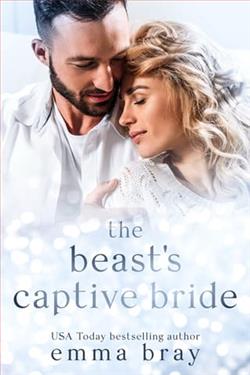Page 40 of It Always Snows on Mistletoe Square
I saw him to the door, and he told me he was really looking forward to joining me again for the next instalment in Estelle’s lengthy volume of stories.
As I closed the door behind him and headed back into the sitting room to tidy away the now empty glasses, I couldn’t decide whether he meant he was looking forward to seeing me or hearing the story. In the end I decided that hopefully he meant both.
It rains for most of the day, so I spend my time in my room typing up what I know so far about Estelle’s family.
I have lunch on my own, because Estelle and Angela have gone out to take Estelle to an appointment. They don’t say what sort of appointment, so I don’t ask. But they take Alvie with them, so for the first time I really do have the house to myself.
After lunch it’s still raining, so I decide to have a bit of a nose around the house. I’ve already taken a good look at most things in the hall and the sitting room, as other than my own room those were the two rooms I spent the most time in. Angela never seemed that comfortable when I went along to the kitchen, so I tended to keep away from there.
Estelle has a classic, but eclectic mix of decor and objects that seem to date from as many decades as the house has stood in Mistletoe Square. From the periods in the house’s history I’ve already visited with her, I recognise a few things – a couple of ornaments from the Georgian story that stood on the mantelpiece, and one of the tapestries from the hall in the Victorian tale. On a large bookshelf at the back of the sitting room I find a very old and worn hardback copy ofA Christmas Carol, along with a few other Charles Dickens novels. These can’t be first editions, can they? I wonder. They do look incredibly old.
I carefully open the copy ofA Christmas Carol; at the front on the title page there’s a dedication and a signature written in black ink:
To Timothy, Belle and the Snow Family.
Thank you for the inspiration.
Your friend,
Charles Dickens
‘Wow,’ I say out loud. ‘Double wow. That’s incredible if it’s real?’
But it certainly looks genuine. What possible reason would Estelle have for faking it? Carefully, I put the book back on the shelves.
After I’ve had another good look around the ground floor, avoiding Estelle’s bedroom to which the door is always closed, I head back up the stairs to the floor where my own rooms are. Then, for the first time, I continue up the next flight of stairs to the floor above, to the area of the house that is in between mine and Angela’s right at the top.
The landing on this floor looks much like mine does, with the same carpet and wallpaper. But unlike my floor, where the doors are usually ajar where I come and go in between rooms, here the doors are all tightly shut.
I pause outside one of them.I probably shouldn’t …I think, my hand hovering close to the doorknob. It’s likely to be locked anyway.
Before I can talk myself out of it, my hand grabs the brass doorknob and I turn the handle.
To my surprise the door swings open with no resistance at all. Inside the dark room the blind is turned and the curtains are pulled, but I can just make out a small tower of packing cases stacked up in one corner, alongside several pieces of furniture with dust sheets thrown over them.
I reach for the light switch and flick it on.
‘Oh,’ I say, not sure why I’m disappointed. ‘Looks like stuff they don’t use any more.’
I walk further into the room and lift a couple of the dust covers. Underneath there’s more antique and vintage furniture – a couple of side tables, a set of bookshelves, a china cabinet and some chairs. Some of it looks really old, some more retro, like it’s come from the 1960s and 1970s.
I carefully place the covers back over the furniture, thinking how sad it is that Estelle doesn’t have a use for any of this now. And yet she still holds on to it, as many older people do. Memories of past times, happy times, that have now long gone.
The boxes contain similar – a mix of china ornaments, silverware and paintings from various eras that once would have graced the parlour, sitting room, hall or even dining room of this house when Estelle’s family and ancestors lived here.
When Estelle spoke to Ben last night about how she would have adjourned from the dining room into another room many years ago, she looked quite forlorn. So seeing Estelle’s past all covered up like this, unused and gathering dust, makes me sad for her.
Even though we are still quite a few decades away in Estelle’s stories from when she began living in this house, I’m pretty sure she must have been used to a lifestyle similar to those family members we’ve already met. So the quiet life she now lives with Angela, although happy, must seem a long way from her opulent past, and it makes me even more determined to do justice to her stories with my own words.
Quietly, I back out of the room, and pull the door shut behind me.
I don’t attempt to open any further doors. These rooms might only contain some old furniture and a few ornaments wrapped in newspaper, but, to Estelle, these rooms contain her memories, and I wouldn’t want to disturb or intrude on those for anything.
After Estelle and Angela have returned from their outing, Estelle takes a rest in her room while Angela prepares dinner for us all. She shuns my offers of help, but allows me to set the table with the silver cutlery and white bone-china plates we always use for meals.
‘You all right, Alvie?’ I ask as the little dog watches me from the chair. ‘Did you enjoy your excursion today?’
Alvie is usually at Estelle’s heels twenty-four seven, so it’s strange to find him in the sitting room without her.















